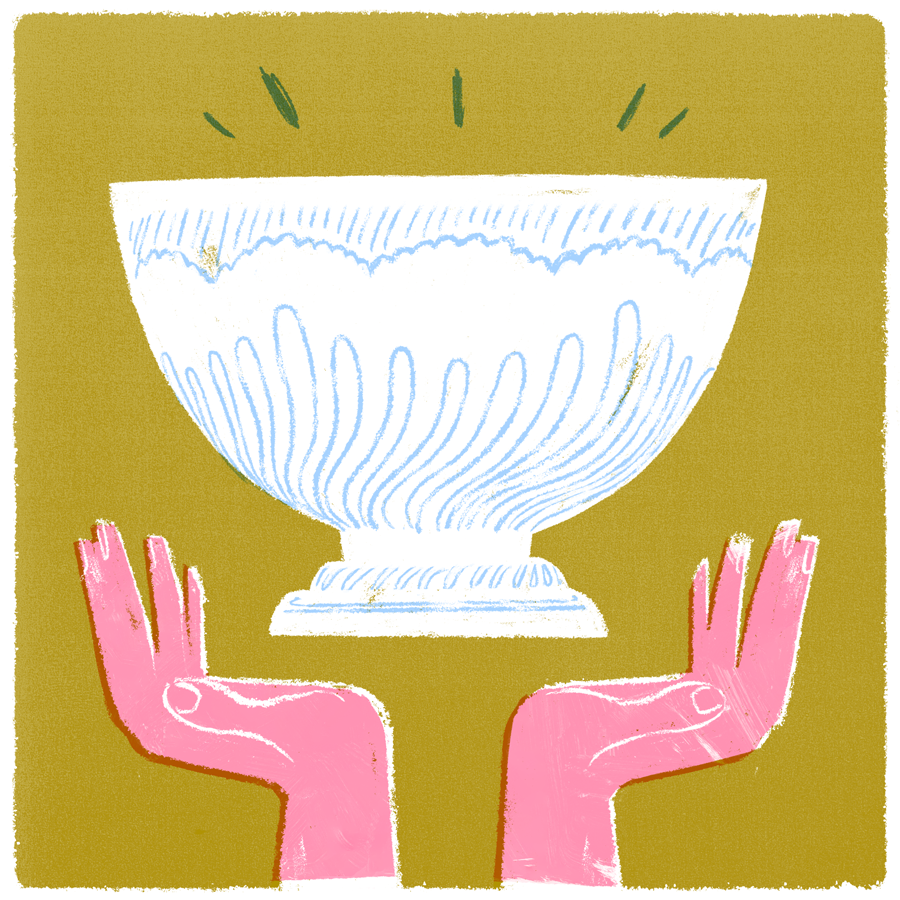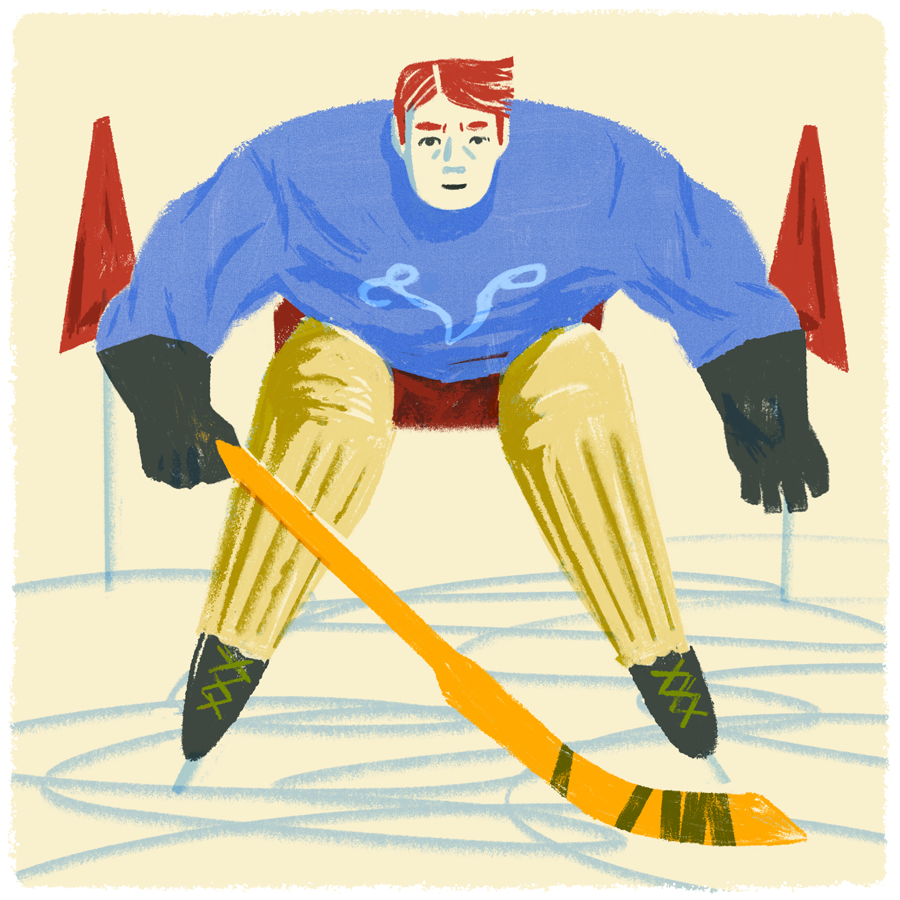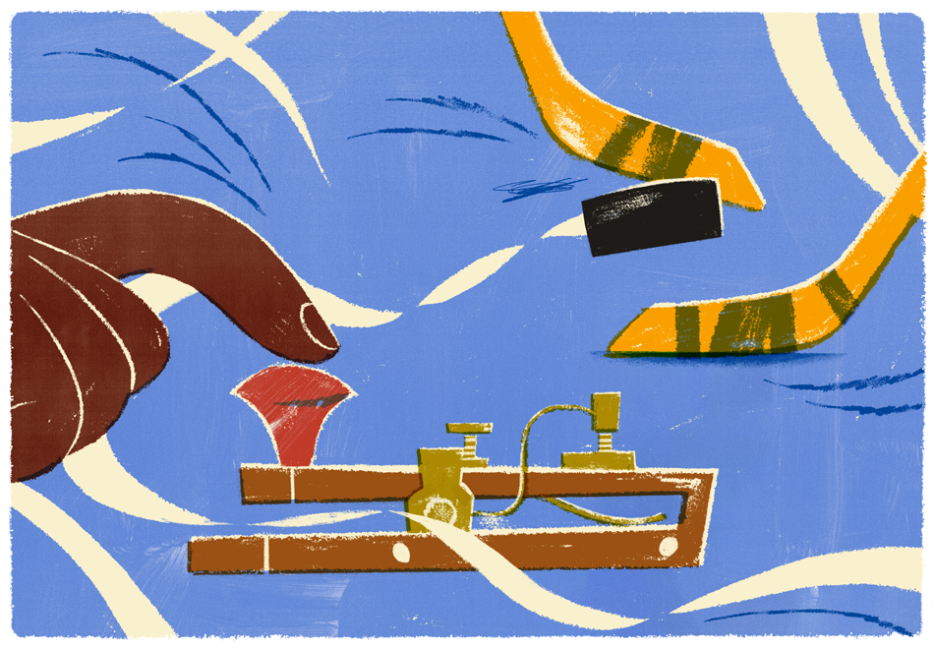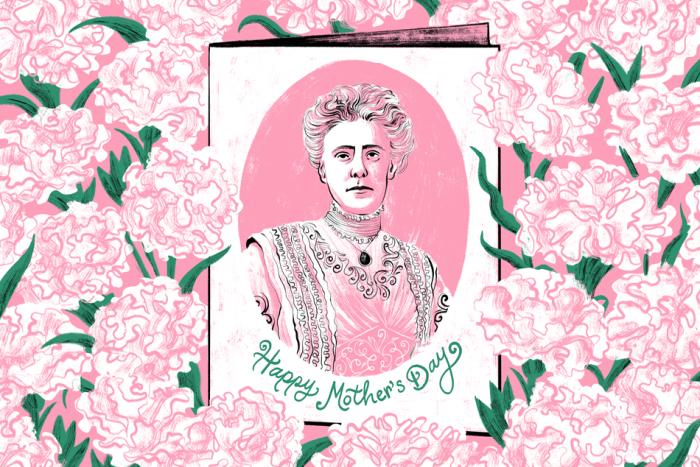Just 20 years old, Weldon Champness Young was already a veteran with the Ottawa Hockey Club when he went to the Russell House hotel for a formal banquet in March of 1892. The evening was hosted by the Ottawa Amateur Athletic Club to celebrate the end of his team’s season. When Weldy and the other guests sat down, they found menu cards that told two tales. One side, as usual, set out the fine fare the hotel would serve that Friday night. The other side showed the names of the Ottawa players and an account of another impressive winter. In ten matches, the squad had won nine times, scoring fifty-three goals and allowing just nineteen. “This was the record,” according to the Daily Journal, “of a genuine amateur team playing for pure love of sport and treating all comers as they wished to be treated themselves.” More than seventy-five people had gathered in the hotel dining room to honour that success, and by the end of the night they’d have even more to cheer about.
Located a short walk from Parliament Hill, the five-story Russell House was the finest hotel in the Canadian capital. Oscar Wilde stayed there in 1882, and many politicians lived there; Wilfrid Laurier called it home for a decade, including during his first year as prime minister. It was also popular with Ottawa’s high society, who enjoyed the luxurious public rooms and excellent food. The 1880s and ‘90s were the hotel’s heyday so it was the obvious choice for a banquet that attracted many prominent gentlemen—including guests from Montreal and Toronto—and featured music from the Governor-General’s Foot Guards band.
Around 9:30 or so, women joined the festivities, taking seats in a wing of the dining room, and the hotel staff served coffee and ices for dessert. At 10 o’clock, J. W. McRae, president of the OAAC, began the formal proceedings. A lengthy round of toasts was a regular part of such gatherings and, by tradition, the host always led off with one to the Queen. After McRae had done so, Philip Dansken Ross, the publisher of the Journal and past president of the OAAC, drew cheers for his toast to the Governor-General that included complimentary remarks about the Englishman’s staunch support of sports, especially hockey.
In 1888, an aging Queen Victoria had tapped Frederick Arthur Stanley, the 47-year-old son of a former British prime minister, to be her Canadian representative. After serving two decades in Parliament as a Tory MP, Baron Stanley of Preston entered the House of Lords in 1886. Going to Ottawa, not exactly the most glamorous—or warmest—city in the British Empire, sounded like a retirement posting. Initially, he declined the Queen’s vice-regal offer, but Lord Salisbury, his prime minister, talked him into becoming the Dominion of Canada’s sixth Governor-General. When he arrived in Ottawa in June 1888, he was a middle-aged aristocrat with a stout build. He kept a grizzled beard and above his broad forehead, his hair was thinning and starting to grey. The New York Times described him as having “a commanding and soldier-like appearance” and being “decidedly good looking.”
He’d never seen a hockey match before coming to Canada, but Stanley came from a sporting family. In 1780, his great-grandfather, the 12th Earl of Derby, created The Derby, the most prestigious of the three races that make up the British Triple Crown. Stanley shared his family’s passion for horse racing as well as its love of hunting, fishing and cricket. He and his wife, Lady Constance, had ten children, eight of whom survived to adulthood. The family quickly embraced winter in the great white north, enjoying snowshoeing, tobogganing and, most of all, hockey.
Unable to attend the banquet for the Ottawa Hockey Club, Stanley sent something better. His aide de camp, Lord Kilcoursie, delivered the surprise by reading a letter from His Excellency: “I have for some time past been thinking that it would be a good thing if there were a challenge cup which should be held from year to year by the championship hockey team in the Dominion.” Even better, he’d already asked a former aide, who was now back in England, to order such a trophy.
The thrilled guests at the Russell House applauded enthusiastically. When McRae proposed a toast to “the hockey team,” friends and supporters stood on their chairs to drink. Then each player stood to respond. Team captain Herbert Russell went first and made everyone laugh. Young earned a special round of applause for raising a glass to the good fellowship that existed among the clubs of the O.A.A.C. and their members. The last player to speak, Chauncey Kirby, added emphasis to his words by climbing onto the table.
Eventually, Kilcoursie was on his feet again with a song he’d composed. Called “The Hockey Men,” it began:
There is a game called hockey—
There is no finer game,
For though some call it “knockey”
Yet we love it all the same.
’Tis played in this Dominion,
Well played both near and far;
There’s only one opinion,
How ’tis played in Ottawa.
The verses that followed were about the members of the team and were, if possible, even cornier and more ridiculous than the first two. The stanza about Young, who played cover point, one of two defence positions, went:
At cover point—important place—
There’s Young, a bulwark strong,
No dodging tricks or flying pace
Will baffle him for long.
Everyone loved the performance. More songs, toasts and speeches followed until the guests sang “God Save the Queen” and then belted out “Auld Lang Syne” before heading home or moving on to the next party at midnight. The evening had been a great success.
The delight at the Governor-General’s promised gift on that evening had come from hockey people: players, league officials and other hangers-on. Still, their excitement over a trophy to recognize the country’s championship team was indicative of the growing ardor for the sport. But not even these insiders could have imagined what the Cup would come to mean to Canada.
*
Stanley had picked just the right moment in hockey’s development to donate a trophy. The modern version of the sport began in 1875 with an indoor match at Montreal’s Victoria Rink. Eight years later, at that city’s first Winter Carnival, three teams—the Victorias, McGill and Quebec City—played a round-robin tournament in what was billed as the “novel game of hockey.” Soon it spread to Ottawa, Kingston and Halifax, where an early version of the sport had long been played. By the end of the 1880s, there were matches in Toronto and the Ontario Hockey Association formed in 1890. More and more Canadians were playing—and watching—the game. But Stanley’s gift wasn’t just good timing. Although the nation had emerged out of a collection of colonies in 1867, Canada was technically just a self-governing dominion and definitely still part of the Empire. In fact, people born in Canada or naturalized immigrants were British subjects (this didn’t change until 1947 with the Canadian Citizenship Act). So colonial thinking lived on. Most English Canadians were ardent Anglophiles and if a member of the British nobility—indeed, the Queen’s own representative in the country—approved of this new game enough to bestow a trophy, people took it seriously: hockey must be something Canadians should enjoy. And so they did.
The sport had already made it to the prairies. Local businessmen, including Jack Armytage, launched the Victoria Hockey Club of Winnipeg in 1890 and three years later, the game had “attained an immense hold in the public estimation” in that city. A multi-sport athlete, Armytage was renowned as a trainer and kept himself and his teammates in excellent shape with rigorous drills. In 1895, his Vics toured Ontario, Quebec and Minnesota and won four of five matches. After Winnipeg beat the Montreal Hockey Club 5-1, the teams went to the Montreal Amateur Athletic Association clubhouse for the post-game festivities. While there, Armytage spied the Stanley Cup in a trophy case. He was determined to win it.
In February 1896, the Vics hopped on an eastbound train, accompanied by a handful of their hardcore fans. They were going to play Montreal’s own Victorias, the new Cup holders, in a Valentine’s Day match at Victoria Rink. (Sure, two teams named after the Queen meeting each other in a building named after the Queen sounds like a royal parody, but it was just an indication of Canada’s devotion to the monarch.) Adding to the fun, the two teams wore similar colours. Garnet with gold trim and a gold buffalo on the left chest for the westerners and maroon with distinctive yellow Vs on the front of the sweater for the easterners.
Few Montrealers gave the challengers much of a chance. Fans liberally placed bets on the assumption that the westerners would get schooled by the hometown squad. The 2,000 or so in attendance included twenty-five Manitobans who “gave an excellent exhibition of Western lung power” in a vain attempt to match the volume of the locals.
The fans back in Winnipeg were no less excited. The phones never seemed to stop ringing at the offices of the Manitoba Free Press as people called the newsroom to get the score. Hundreds of others had congregated in three of the city’s hotels—the Manitoba, the Queen’s and the Clarendon—to await game updates, sent via telegram.
Only a few years old, the Manitoba Hotel was the city’s poshest. Built in the French Chateau style by the Northern Pacific and Manitoba Railway, it set the tone for many future railroad hotels in the country. Numerous towers, turrets and gables adorned the roofline of the large red sandstone and brick building. The highlight of the interior was a large, high-ceilinged rotunda. That’s where John Tait, city manager of the CPR Telegraphs, disappointed the fans by announcing, in his distinct Scottish burr, an early Montreal lead. But he soon read another bulletin from the branch office in the hotel. The goal had been disallowed because the play was offside. Eleven minutes into the match, the fans cheered: Armytage had scored. A second goal followed nine minutes later. The telegrams tracked only major developments, such as goals and injuries, so there were stretches of anxious wondering about what was going on more than 1,800 kilometres to the east. In the second half, there was a long, worry-filled wait when nothing at all appeared to be happening until word came in that Higgy—Winnipeg cover point Fred Higginbotham—had broken his suspenders, leading to a delay until someone could find a new pair for him.
Finally, at 9:50, Tait announced, “in stentorian tones, which reverberated through the great rotunda,” the final score: 2-0 for Winnipeg. The response was triumphant cheers and gleeful handshakes all ‘round, followed by the sending of many congratulatory telegrams to Montreal. Over at the Bijou opera house, the announcement of the final score during the performance of Princess Toto elicited “a perfect shriek of delight” from the audience. Meanwhile, back in Montreal, supporters of the western Vics made their way to the Windsor Hotel to collect at least $2,000 in winnings for their well-placed wagers.
After the traditional dinner with the host team, the Vics headed home in a private car on the CPR train. They took with them their share of the gate—just $160—and the Stanley Cup. A crush of fans packed the platform and cheered as the train chugged into the CPR depot. It was flying the Union Jack and had hockey sticks and brooms, denoting a clean sweep, stuck in its cow-catcher. As a brass band played “See the Conquering Heroes Come,” the players climbed into the open sleighs waiting for them. The Cup sat in full view in the lead sleigh as the procession—including the band and the fans—made its way along Main Street to the Manitoba Hotel, creating the first Stanley Cup parade.

A crowd of several thousand greeted them at the hotel. After the mayor and the president of the hockey club had made speeches from the bunting-draped balcony, Armytage stood up in his sleigh. The team captain said he was too hoarse to give a speech, which made the crowd laugh, and thanked everyone for the warm welcome. Then the players and dignitaries made for the hotel’s smoking room where they filled the trophy to the brim with champagne. Drinking from the Cup would become a ritual that subsequent winners would gleefully follow.
Losing had been a bitter blow for the Montrealers. A Free Press story claimed the Victoria Rink’s caretaker “was so worked up over the defeat that he shed enough tears to almost fill the big trophy.” The eastern Vics issued a challenge in mid-November and on Christmas Day, the former champions travelled west for a return match scheduled for December 30. This time, there was far more coverage in newspapers across the country.
A large crowd went down to the train station and greeted the challengers with “a ringing cheer.” The next morning, 700 people showed up to watch them practice at the McIntyre Rink. In the hotels and shops, and on the streets, all anyone talked about was the big game. Montreal’s Star marveled at the unprecedented excitement and predicted the police would need to focus on keeping order “to prevent the anxious crowds who cannot obtain tickets from storming the rink.” Along with removing the gas lighting and adding four additional electric arc lights as well as opening large vents in the roof in hopes of solving the problem of mist obscuring the fans’ view, the building’s management increased the capacity from 1,200 to about 2,000 in preparation for the game. Even that wasn’t going to be enough. The price for one of the 250 reserved seats was a steep two dollars. But that didn’t stop scalpers from doing brisk business, getting as much as $25 for a pair. A man who’d come in from Calgary to see the game paid $15 for one and another fan traded two-and-a-half tons of coal for a ticket.
Lord Stanley had appointed two respected Ottawa men as trustees of the Cup: P.D. Ross, the newspaper publisher who’d been at the 1892 banquet, and John Sweetland, a doctor and the Sheriff of Carleton County. One of their responsibilities was to appoint referees. Weldy Young often reffed hockey and lacrosse matches and was someone both teams could agree on. So the trustees asked him to travel to Winnipeg to handle the game. He started the match a little after 8:20 and before long it was hard to hear his “dainty little whistle” above the crowd noise. The play was fast and close and exciting. The home team thrilled its fans by storming out to an early lead, firing the first three goals. But Montreal roared back to go ahead in the second half. When Winnipeg scored late to tie it up at five goals apiece, the eruption impressed even the Montreal seven. “I have played many exciting championship games, but I never heard such a wild burst of cheering as went up when the score was made even,” one member of the team said later. “It was like a great and prolonged road of thunder rolling again and again from end to end of the rink.” When Montreal scored again, it put “a damper on the crowd but they could not restrain a cheer for the fine work of the visiting team.” The final was 6-5 and as the Daily Tribune observed, “Winnipeg is in mourning for her lost Valentine, her Stanley Cup.”
Young praised the crowd: “During all my experience in hockey matches both as a player and as an official,” he said, “I never saw such an intelligent, impartial and well conducted audience.”
Whether he knew it or not, the audience was far larger than just the crowd in the rink. The CPR and Great North Western telegraph companies had arranged to provide detailed coverage of the game with direct wires to the arena. This had been done for other sports, especially boxing, but not for hockey. The Manitoba Hotel had promised that “every move of the puck will be announced.” Several hundred people made the rotunda reverberate with cheers, and groans, as they followed the play in only slightly delayed real-time through frequent CPR bulletins that were written with the help of a hockey expert stationed beside the telegraph operator:
“Merritt has just stopped a hot one.
Grant has just had a run down the rink and made a shot on Winnipeg’s goal, which was well stopped by Merritt.
The play is very fast—and just 8 minutes more to play.
Merritt has stopped several hot ones.
Montrealers are keeping the puck at Winnipeg goal and raining shot after shot.
Winnipeg on the defensive. Montreal is playing the best game.
The Winnipegs are wakening up.
Another shot on Winnipeg goal was beautifully stopped by Merritt.”
In Montreal, the Victoria Rink was hosting the skating club’s first fancy dress carnival of the season and the Daily Star had set up the twelve-foot square Star Bulletin Booth in the centre of the ice. News of the game went up on eight large bulletin boards that rotated on pivots to allow one side to be visible to skaters while the other side was being updated. A brass gong sounded with each new telegram, which came so quickly that five Star employees struggled to keep up.
Although Winnipeg’s reign as Cup champions lasted for less than a year, a team from outside Montreal had finally won the trophy and fulfilled Stanley’s desire to create a national honour. The matches in February and December served notice that westerners were just as good at, and just as passionate about, the game as anyone else. Enthusiasm for the sport was exploding, the rinks were packed and the press had made the Cup a big story. Stanley’s gift mattered now. Best of all, fans in two different cities, in two different provinces—and, indeed, anywhere else in the country where people were interested—were able to experience the same game at the same time because of the telegraph. More than an influential precursor to broadcasting, these play-by-play transmissions brought Canadians together through their shared love of hockey.
*
Having been one of the first people to hear about the Stanley Cup, Young would find it impossible to shake his desire to win it. He and the Ottawas came close a couple of times but failed. Seven years after attending the banquet that launched an obsession, Young moved to the Klondike, leaving his team and his hometown—but not his hunger for the Cup—behind. During his first couple of years in the sub-arctic, he offered occasional updates on life in Dawson for people Outside, as Yukoners called anywhere beyond the territory’s borders. In a summer 1900 letter, he covered local politics, a mild smallpox outbreak and the doings of several former Ottawa residents. He also made an announcement that must have seemed particularly outlandish given the Northern town hadn’t even existed five years earlier. “And now, by way of warning, let me break the news gently, a challenge from the Dawson Hockey club, for the possession of the Stanley Cup, is now being prepared,” Young wrote in the Citizen. “And let me further inform you ‘outsiders’ that if a team is sent you do not want to hold us too cheaply.”
The son of Ottawa’s fire brigade chief, Young grew up in a fire hall. Older brother George had been an original member of the Ottawa Hockey Club and Weldy joined the team in 1889. Nicknamed Chalk, he had plenty of skill and speed. As early as 1893, he began scoring, or setting up goals, after making end-to-end rushes, among the first cover points to do so.

Although Young was respected as a referee because he had “a thorough knowledge of the game and a reputation for squareness,” he could be a terror as a player. He wasn’t particularly large—he was a wiry 165 pounds, about average for players of the day—but he was tough, loved to indulge in a physical game and could be hot-headed. Many opponents felt his stick across their ankles and he often found himself at the centre of brawls. During a late February 1898 game, in the days before nets, with the score tied 4-4, the umpire signaled a Quebec goal. Everyone else in Ottawa’s Rideau Rink was sure the shot had been well wide. An incensed Young skated up to the umpire and pointed to a path the puck had made along the slushy ice. That, he said, proved the puck hadn’t gone between the uprights. The umpire, who later claimed that Young had jabbed him with his stick, jumped at the player. Young responded by punching him, which brought a crowd of people, including two or three cops, onto the ice and led to a skirmish between players and fans. Since the police weren’t much help in calming everyone down, it fell to Ottawa’s captain Harvey Pulford, known as the Bytown Slugger, to break it up.
Off the ice, Young was an affable and gregarious guy with many friends. One day in 1897, while on his way to a Montreal football match, he asked a boy on the street, “Hey, kid, want to see the game?”
“Sure do.”
“Come on, I’ll take you in,” Young told him.
When he asked the lad if he liked hockey, the 13-year-old said yes, though he’d really only recently started playing. “Right. I’ll be here with the Ottawa team next winter,” said Young. “How’d you like to be the stick boy?”
Serving as stick boy for Young and his teammates when they played in Montreal ignited Lester Patrick’s love of hockey. He went on to be a star rushing cover point on the Brandon team that lost a 1904 Cup challenge to an Ottawa team that included several players he’d fetched sticks for. By the end of his Hall-of-Fame career as a player, coach and general manager, Patrick had won the trophy six times. “It just goes to show what a thoughtful act will do for a boy,” he later said. “Maybe I’d have got into hockey some other way but that gesture by Young set me on my way.”
*
After moving to Dawson, Weldy Young played for the Civil Service team, which issued a Cup challenge in 1901. Winnipeg’s Vics were once again champs. The Ottawa Journal reported that while the trustees had asked about suitable dates, they never heard back, suggesting the Yukoners had decided against going that winter. But it’s also possible the trustees had discouraged the team; they often used scheduling problems to squelch unwanted challenges. Perhaps Ross, Sweetland and Winnipeg captain Dan Bain appeared accommodating in public out of courtesy but were privately reluctant to entertain a challenge from a team they considered inferior. The Vancouver Daily News printed what the trustees may have been thinking. Dismissing Young as too old, the paper added, “It will no doubt be an enjoyable trip, and the Dawson boys can loosen themselves of their nuggets, but no Dawson team can lift that cup unless all the Vics drop dead.”
Three years later, the plan to send the Civil Service team had given way to the idea of assembling an all-star squad made up of the best players in town. By this point, Young’s former club, led by the sport’s original superstar, “One-Eyed” Frank McGee, had a stranglehold on the trophy. A letter to Ross and Sweetland went out on August 24, 1904: “The Klondyke Hockey Club of Dawson, Y. T., hereby challenge the Ottawa Hockey Club, of Ottawa, to a series of games for the Stanley Cup, emblematic of the hockey championship of Canada, said series of games to be played under and in accordance with the regulations governing the trophy in question.”
To help the cause, Young wrote a long, less formal, letter to Ross. He laid it on thick about all the success Ottawa’s sports teams had experienced since he’d left. Cleverly dealing with any concerns Ross might have that Young was past his prime, he wrote that it was “particularly gratifying to see that five of the last winter’s unbeaten champions were teammates of my own as far back as ’98 and to me it exemplifies beyond doubt the truth of the old adage ‘The old dog for the hard roads, etc.,’ and holds out for me, I must admit, no little consolation.” Young was referring to an Irish proverb—“The old dog for the hard road and leave the pup on the path”—about the advantage of experience in the face of a difficult task.
Young also sought to put Ross at ease about the other players. “Speaking of the team itself, I can assure you that they are as likely a bunch as ever happened,” he wrote. “True we are badly handicapped by so little competition but unless I miss my guess by a large majority I will produce at the right time as good a forward line as ever went a-hunting for a Stanley Cup.”
The postscript dropped the name of Joe Boyle, who would represent the team in the east and had full authority to arrange dates. The swaggering Yukon mining promoter was a regular at the Russell House, where Ottawa’s powerful and connected, including Ross, hung out. By mid-October, the Winnipeg Tribune reported that Ottawa had agreed to a best-of three series with Dawson—giving Young another chance to finally win the Stanley Cup.
*
Late in the year, just a few days before the Winter Solstice, the Klondike enjoyed precious few hours of daylight and the Dawson townsite, at the bottom of the Yukon River valley, received no direct sun at all. So it was dark and cold—a frigid -23 Celsius—when three players left town on foot at 7 a.m. on December 18. They had planned to let a dog team pull their gear, but so little snow had fallen that wasn’t possible. They walked down the Overland Trail wearing moccasins and parkas and carrying their gear on their backs.
Many residents cheered the trio off that Sunday morning and the Yukon World noted that the team was going east to “show some of the old time cracks how the noble game should be played.” Accepting the role of long shots simply wasn’t in the Yukoners’ nature. The next morning, four more players hopped on their bikes and rode out of town under clear skies with a north wind behind them. The cyclists hoped to make it to Whitehorse in a week.
Setting out to, as they put it, “win fame and the Stanley Cup,” the hockeyists, as players were often called in those days, figured it would be a straightforward eighteen-day trip to Ottawa. Straightforward by Yukon standards, anyway. Eventually, each of the cyclists had to abandon his broken-down wheels and join the walkers. After travelling more than 500 kilometres in nine days, the team arrived in Whitehorse, tired but on schedule. The next morning a blizzard shut down the narrow-gauge White Pass and Yukon Route railway. When they finally reached Skagway, Alaska, they’d missed their steamer to Vancouver by two hours and had to wait three days to board a Seattle-bound ship that made many of the players severely seasick.
Worse, Young wasn’t with them. Although he’d been named captain and had helped select the team, if he left with the others, he’d lose his civil service job. He’d have to finish handling the election returns first and then try to catch up.

Even if their star player could make it in time, most hockey people in the east refused to consider Dawson City a serious contender. The team was from a small sub-arctic town and no squad from west of Brandon had yet challenged for—let alone won—the Cup (though none of the Dawson players was originally from anywhere west of Manitoba). The prevailing wisdom was that the game was at its best in Montreal, Ottawa and Winnipeg, while the play in the Ontario Hockey Association, which Ottawa had long ago quit, and the Maritimes was inferior. But there was more to this than hockey snobbery. Even during the Vics versus Vics matches of 1896, the newspapers played up the conflict between the “effete east” and “the Wild and Woolly West.” Hockey wasn’t the root of the country’s endless regional squabbles, but it didn’t escape the wrangling either.
The Ottawa team had insisted the Klondikers not play any exhibition matches en route. This wasn’t to ensure the challengers would arrive unprepared—it was to avoid any lopsided losses that might dampen ticket sales in Ottawa. Despite the cynicism, and the need for the Dawson hockeyists to assure reporters their challenge was no joke, the team’s journey generated a lot of enthusiasm. And there was more to it than an affection for hockey and underdogs. The Klondike Gold Rush was over, but Canadians continued to romanticize the Yukon and the long journey from “the mining centre of the golden North to the Capital of Canada” only added to the story’s charm. All along the route, people cheered the team. And it was no different in the home of the champions, where the Citizen reported, “The matches are creating the greatest interest of any Stanley Cup contests yet played in Ottawa.”
At a quarter to five on January 11, 1905, three-and-a-half weeks after leaving Dawson City, the hockeyists stepped off the train and onto the platform of Central Station where a large and appreciative crowd gave them “a right hearty reception.” An executive from the Ottawa Hockey Club led the players away to the Russell House. Despite the cordial welcome, the hosts weren’t about to grant the visitors’ request for a one-week postponement before starting the series. Meanwhile, the challengers denied rumours they’d threatened to default the opening game and focus on the second and third ones rather than play unprepared. The first match would go ahead as scheduled, with Earl Grey, the new Governor-General, “facing the puck” at 8:30 p.m. on Friday the 13th.
After nearly a month on the road, and with no time to practice, the exhausted and far-from-game-shape Klondikers, still waiting for Weldy Young, would take on the Stanley Cup champions before a sell-out crowd of 2,200 fans at Dey’s Arena in just over forty-eight hours.
*
The Klondikers lost the first game 9-2. Joe Boyle followed an already well-established custom for losing teams and blamed the referee. Then, in the Bijou Hotel bar, Ottawa right winger Alf Smith overheard a Klondiker—Boyle, according to some accounts—trash “One-Eyed” Frank McGee, who’d scored only once: “Who the hell’s McGee? He doesn’t look like much.” Although this may not have been the first example of “bulletin-board material” in hockey, it remains one of the most regrettable. Dawson lost 23-2. “Ottawa simply skated away from them at the whistle,” reported Toronto’s Globe, “and continued to pile up the goals with a merciless monotonous regularity which was farcical in the extreme.” McGee scored fourteen times.
The humiliating blowout didn’t mean the two teams were about to dispense with the tradition of celebrating together after the game, though. Eventually, the party became a little too boisterous and, according to legend, Harvey Pulford attempted to dropkick the Cup over the Rideau Canal. It landed on the frozen water and no one thought to recover it until the next day.
Young’s teammates were in the Maritimes on a post-series barnstorming tour when he finally caught up with them. These games on the east coast as well as in the United States and Ontario were to fund the players’ return to Dawson City. While the Klondikers had proven no match for Ottawa, they did much better against other teams. They won ten games and lost twelve, often before large and appreciative crowds.
The eagerness of the Yukoners to make such an audacious journey, and the public’s response to the whole adventure, revealed just how deeply Canadians had fallen in love with the game. And how quickly. Stanley’s trophy had been a powerful endorsement and technology such as trains and the telegraph had helped spread the sport from Cape Breton to Dawson City, but it was the unlikely mix of grace and ferocity at high speed that really struck people. In the dozen years since the trustees first awarded the Stanley Cup, a niche, largely regional sport with a small fan base had captivated the country. Hockey was now the national pastime.
Correction: An earlier version of this piece said Young and his teammates“...won thirteen games, lost nine and tied one” on their Maritime tour. Accounts of the tour vary. The NHL Stanley Cup Centennial Book has the record at 13-9-1. And in April 1905, the Whitehorse Daily Star reported that the Yukon team had won twelve, lost ten and tied one. But respected hockey historian Ernie Fitzsimmons researched the results of the tour for an article in the Society for International Research Journal (“The Dawson City Tour,” SIHR Journal, 2001) and found that the Klondikers had won ten and lost twelve.






